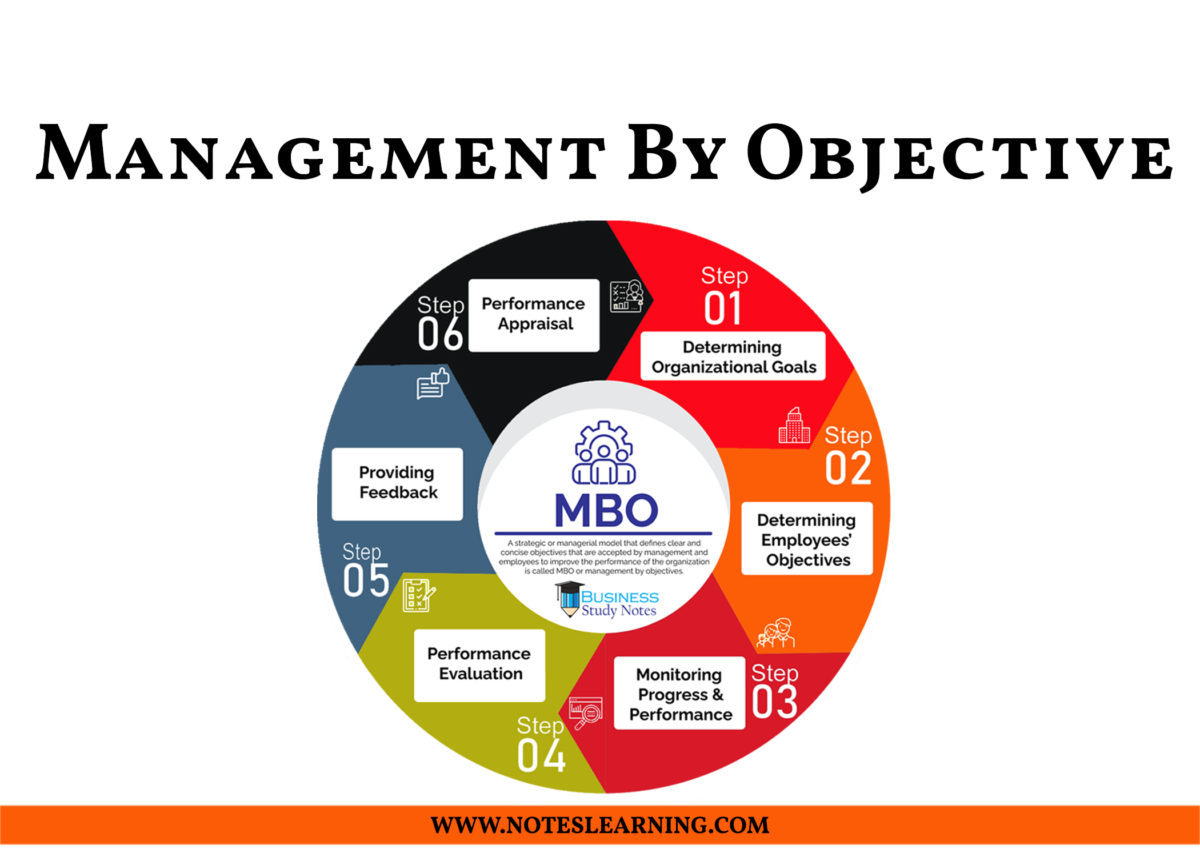Introduction to MBO
Management By Objectives (MBO), also known as Management By Result (MBR) is a management concept introduced by Peter Drucker in 1954 in his book “Practice of Management”. In general terms, it is also known as PRIDE i.e. Performance, Result, Individual, Development and Evolution.
Management By Objective (MBO) is a system for improving performance of both the individual employee and the enterprise as a whole by following the objectives set at the corporate, business and functional level. MBO involves setting goals for the employees and defining the organizational responsibilities so that there is always a balance between the objective of an employee and the objective of an organization.
According to John Humble, “ Management By Objectives is a dynamic system which integrates the company’s need to achieve its goal for profit and growth with the manager’s need to contribute and develop himself.”
Many scholars suggest that MBO is a democratic style of management. MBO involves employees from all levels of organizational hierarchy to achieve the common organizational goal.
Main Characteristics of Management By Objective
- MBO validates “ Participative Management Approach.” It means employees from all levels participate together to fulfill the common organizational objective. Inputs and efforts from functional level employees to corporate level executives are equally considered.
- MBO balances the objectives and the resources. MBO approaches always try to optimize the use of available resources to attain the defined objective.
- Management By Objective provides a dynamic work environment. MBO is a participative approach. We have a defined objective for employees from all the levels hence they have all the freedom to attain the objective with the defined resources. The focus is more on attaining the objective efficiently than the hierarchy in the workplace.
- MBO is Goal Oriented. MBO aligns unit and individual goals with organizational goals. All the efforts by the staffs at all the levels eventually lead to the collective organizational goal.
- MBO focuses on critical areas. The emphasis in MBO is on critical areas that affect the company as a whole. MBO ensures enough attention is provided to that key area. That key area might be finance, marketing, advertisement etc.
- MBO is performance motive. MBO is always progressive. All the goals and objective set must direct towards betterment of the company i.e. there must be performance improvement.
Process of Management By Objective
There is no certain standard procedure to apply for an MBO strategy in any organization. But there are some well accepted elements that complete MBO strategies. Every organization might have a different approach to MBO. Some of such well accepted steps are presented as follow:
1. Define Organizational Goals
2. Define Employees Objectives
3. Continuous Monitoring Performance and Progress
4. Performance Evaluation
5. Providing Feedback
6. Performance Appraisal

Importance of Management By Objective
- The MBO approach helps in effective management and effective planning.
- It encourages commitment of organization towards the employees.
- It is important in clarifying the organizational goals and roles.
- Control facilitation occurs in an organization with the help of MBO.
- MBO encourages commitment of organization towards its employees.
- It facilitates guidance to subordinates.
- MBO helps in coordinating individual efforts with group efforts.
- It is important during the evaluation of subordinates’ performance.
- MBO enhances job satisfaction in individual employees.
- It helps in maintaining a comfortable and ethical work culture in an organization.
- It promotes self control as well as self dedication among individuals in an organization.
- MBO encourages innovative and creative work culture in an organization.
MBO is not the only solution to all the organizational problems. More often, MBO is looked at as a quick solution to their problems by many organizations but they failed at its careful implementation and fool proof planning.
Problems with Management By Objective
- It is really a time consuming process. It will not help if any organization is in need of a quick solution.
- MBO are very rigid in nature. It does not provide flexibility neither in planning nor in implementation. MBO starts with setting objectives and process work around these predefined objectives.
- It exerts pressure on subordinates in order to achieve targets soon i.e. fulfill the objectives.
- The focus is on objectives and fulfilling those objectives, there is less or no incentives for any achievements made.
- MBO is difficult to set up in large organizations as there are other complex organizational formations.
- There are still some organizations which work on traditional and conservatives work patterns so it’s very difficult for them to follow these MBOs.
References:


